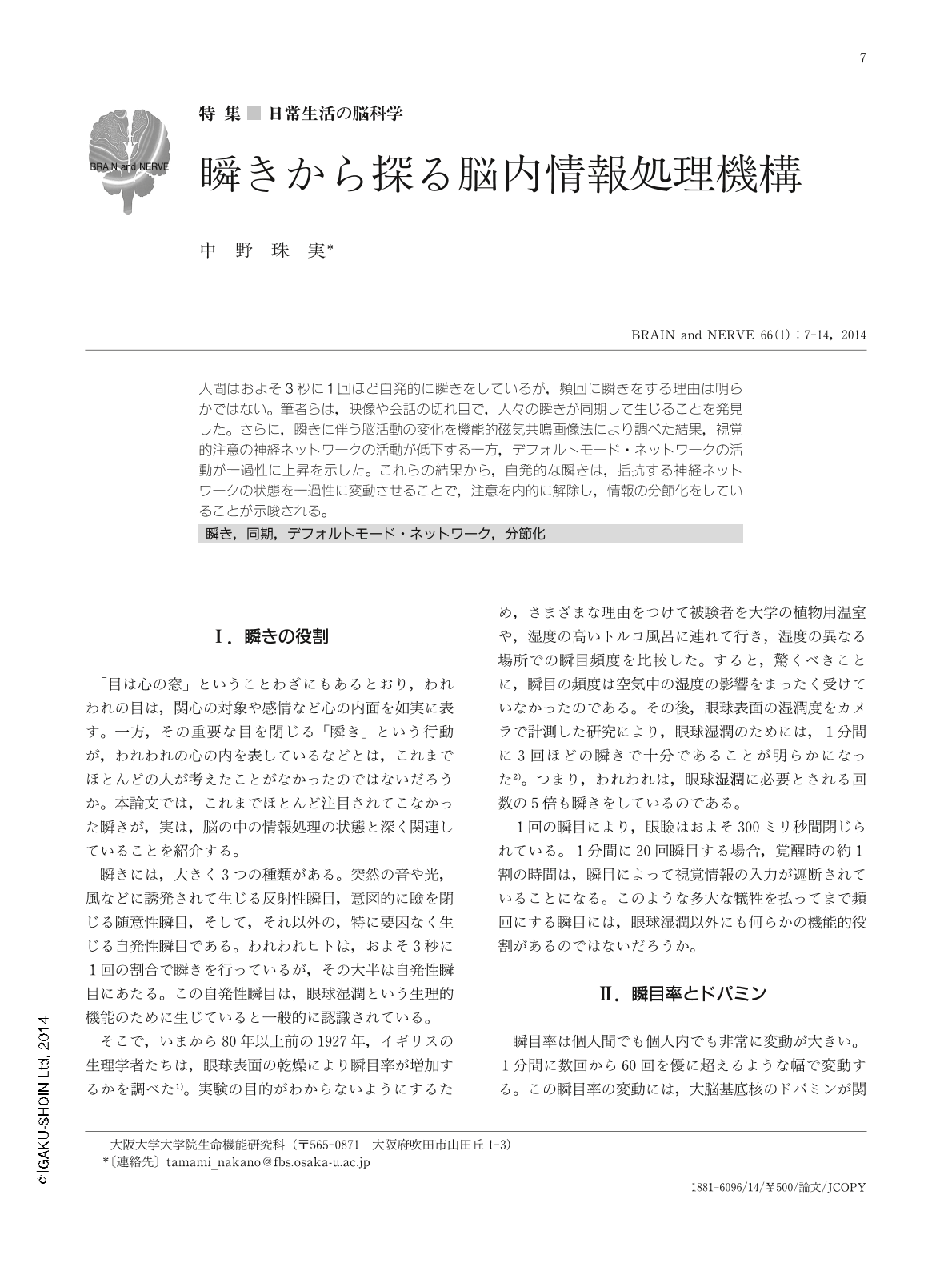Japanese
English
- 有料閲覧
- Abstract 文献概要
- 1ページ目 Look Inside
- 参考文献 Reference
人間はおよそ3秒に1回ほど自発的に瞬きをしているが,頻回に瞬きをする理由は明らかではない。筆者らは,映像や会話の切れ目で,人々の瞬きが同期して生じることを発見した。さらに,瞬きに伴う脳活動の変化を機能的磁気共鳴画像法により調べた結果,視覚的注意の神経ネットワークの活動が低下する一方,デフォルトモード・ネットワークの活動が一過性に上昇を示した。これらの結果から,自発的な瞬きは,括抗する神経ネットワークの状態を一過性に変動させることで,注意を内的に解除し,情報の分節化をしていることが示唆される。
Abstract
People spontaneously generate an eyeblink every few seconds. It is generally accepted that eyeblinks are necessary for ocular lubrication, but spontaneous eyeblinks actually occur several times more frequently than necessary for lubrication. Thus, the functional role of most spontaneous eyeblinks has remained unclear. We found that peoples blinked in synchrony while viewing the same video stories. This blink synchronization specifically occured at the implicit breakpoints of the video stories. Moreover, in face-to-face communication, the listeners blinked with a delay of 0.25-0.5 s after the speaker blinked at the end and during pauses in speech. In contrast, the individuals with autism spectrum disorders, which are characterized by impaired social communication, did not show any eyeblink synchronization with the speaker. These facts demonstrate that spontaneous eyeblink is involved in the contextual segmentation of information, and that eyeblinks have a social function to share the contextual segmentation with others. Futhermore, our neuroimaging study revealed that, while viewing videos, cortical activity momentarily decreases in the dorsal attention network after blink onset but increases in the default-mode network. These results suggest that the spontaneous eyeblink is involved in the disengagement of attention at an implicit contextual breakpoint by controlling the balance between the two competing networks.

Copyright © 2014, Igaku-Shoin Ltd. All rights reserved.


